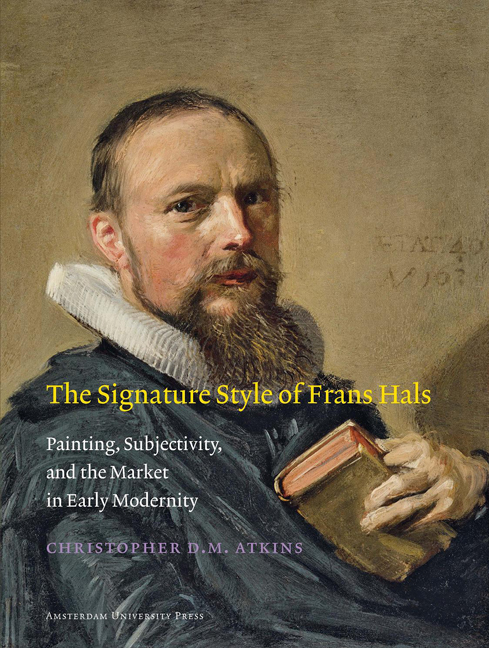Introduction
Published online by Cambridge University Press: 14 January 2021
Summary
Two formative experiences I had with paintings by Frans Hals inspired and shaped this project. In my first semester of graduate school I stood before the portrait of Claes Duyst van Voorhout (fig. 92) in the Metropolitan Museum of Art. There, I confronted the image of a robust Dutch burgher who seemed to be brimming with confidence and vitality. Rather than poring over costume details or paraphernalia, though, I was struck by an overriding sense of technical brilliance in the execution. I marveled at the painter's graceful touches of the brush – short jabs at the elbow, broad sweeps at the contours of the shoulder, daubed highlights at the cheek and nose. To put it differently, I was engrossed not with the “what,” but with the “how.” While this way of viewing might be natural for an artist, it was an epiphany for me, as I came to the discipline as a student of cultural history.
A few years later, I made my maiden trek to the Frans Hals Museum in Haarlem. About halfway through the galleries, I turned the corner to see Hals's late group portraits of the regents of the Old Men's Almshouse (figs. 59 and 60). As soon as my eyes met the portraits I stopped in my tracks. Standing a good fifteen meters or more from the canvases, I could clearly see Hals's bold brushwork. To take but one passage, the knee and calf of the seated figure at the far right read as bold handling of the type more common to the 1950s New York School. I found it hard not to imagine how anyone could have seen Hals's patchwork of red, white, and black as anything other than strokes of paint. Perhaps inspired by the setting – the museum is the Old Men's Almshouse – and certainly influenced by my art history studies, I began to wonder how Hals's original audiences experienced the pictures and to ponder the unmistakable facture employed to craft them.
To excavate how seventeenth-century viewers saw the paintings I turned to early written characterizations of Hals and his art. Theodorus Schrevelius's 1648 characterization of Hals's art illuminates some of the ways the painter's work was understood in his lifetime: “Nor can I let this pass in mute silence, Frans and Dirck Hals, brothers, of whom one excels almost everyone with the superb and uncommon manner of painting which is uniquely his.
- Type
- Chapter
- Information
- Signature Style of Frans HalsPainting, Subjectivity, and the Market in Early Modernity, pp. 11 - 22Publisher: Amsterdam University PressPrint publication year: 2012



